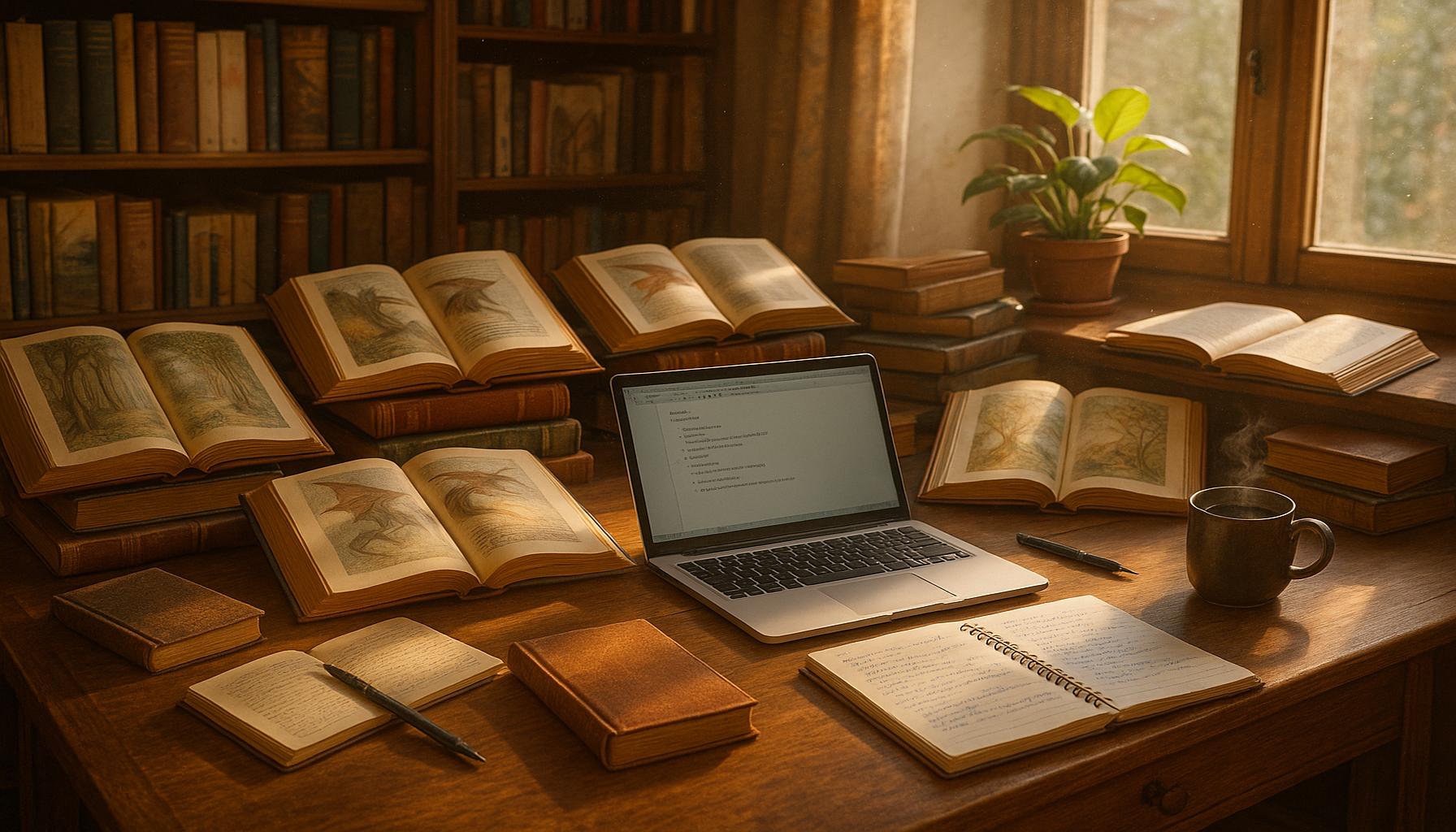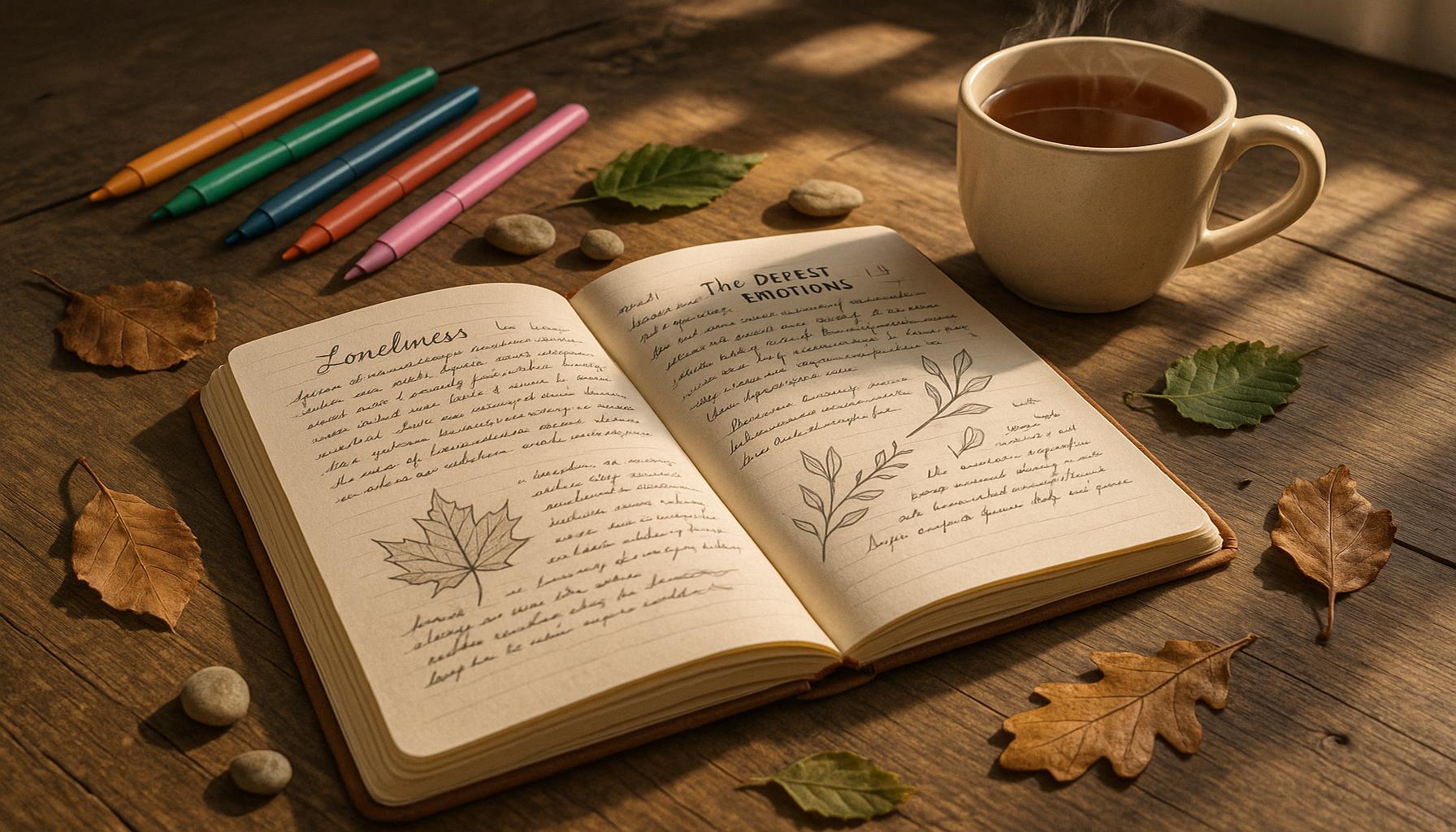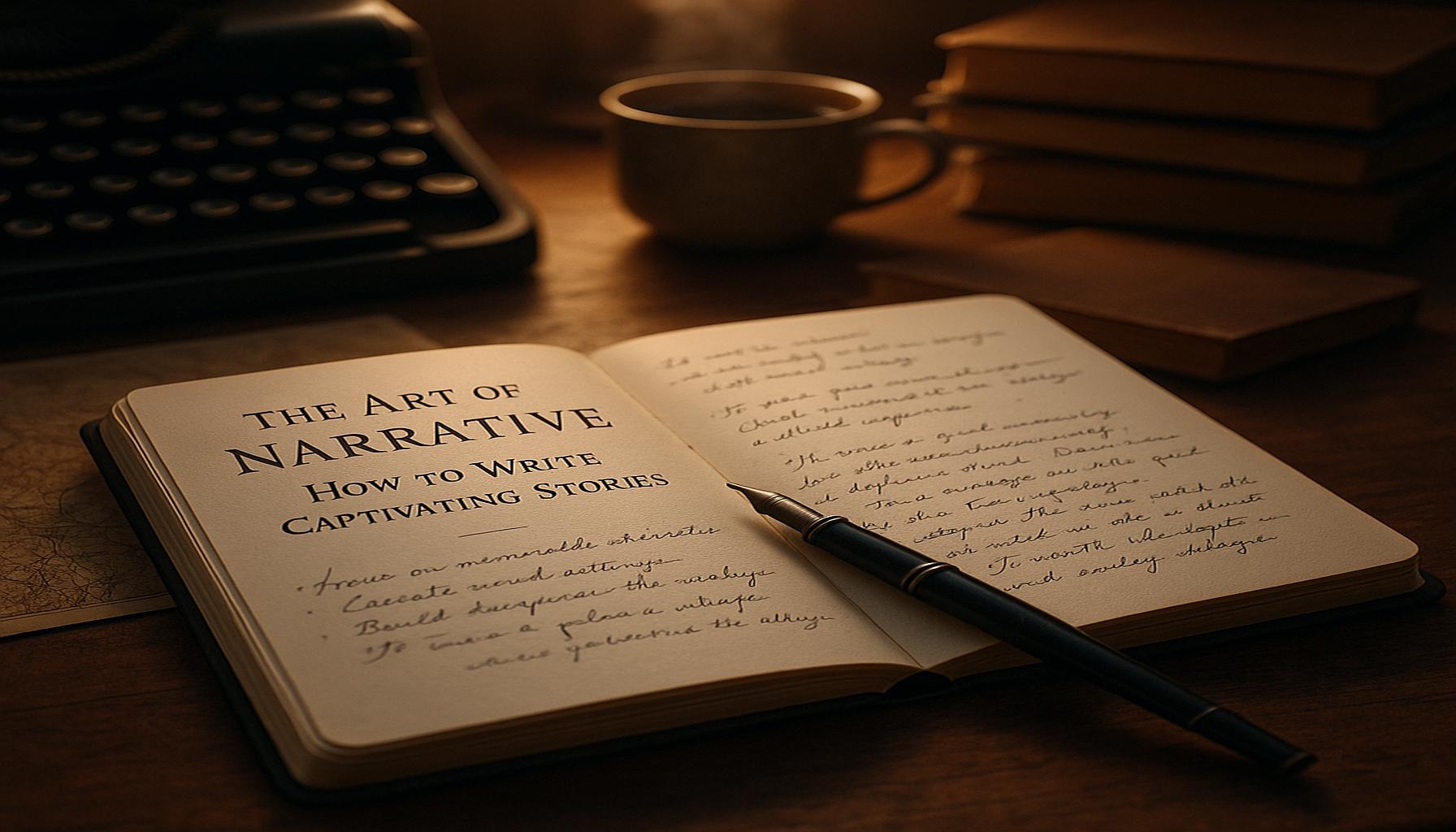The Influence of Reading on Creative Writing: How Books Can Inspire New Projects

The Transformative Power of Reading
Reading is often hailed as a gateway to creativity. It opens doors to new ideas and perspectives that can ignite the flame of inspiration in a writer’s mind. For many authors and aspiring creatives, the books they read significantly shape their writing styles, themes, and narratives. The act of immersing oneself in a narrative world enriches the imagination, providing a myriad of pathways from which to draw ideas, plot structures, and character development. More than just a pastime, reading is an essential practice for anyone looking to hone their literary skills.
Key Benefits of Reading for Writers
- Exposure to Diverse Styles: Engaging with various genres, from literary fiction to science fiction, enhances a writer’s toolbox. This exposure introduces techniques such as stream-of-consciousness, nonlinear narratives, and vivid imagery. For instance, a writer who enjoys exploring contemporary LGBTQ+ literature might adopt unique character developments and dialogues that challenge traditional norms.
- Understanding of Structure: Analyzing plots and character developments serves as a blueprint for crafting compelling stories. Writers can dissect the three-act structure of classic plays or observe how tension escalates in a thriller. By studying how authors like J.K. Rowling craft intricate worlds and build suspense, emerging writers can better structure their own narratives.
- Inspiration from Ideas: Books often provide a spark, whether it’s a character who resonates or a concept that challenges traditional norms. A writer reading dystopian fiction might find inspiration in societal themes and explore how these concepts affect their protagonists’ journeys.
Moreover, the act of reading fosters a connection with other writers and cultures. Authors can learn from the lives and experiences portrayed in literature, which can catalyze the creation of unique projects inspired by diverse characters and narrative styles. For example, a writer might delve into the intricacies of Indigenous storytelling, enriching their own work with a multifaceted perspective.
Noteworthy Examples
- Authors like Stephen King draw inspiration from their literary influences, resulting in memorable narratives that resonate with readers. His blend of psychological depth and storytelling rooted in small-town America captivates audiences, showing how thorough understanding of literary elements can enhance dramatic tension.
- Emerging writers may find that classic novels, such as Pride and Prejudice by Jane Austen, unlock new pathways of thought, paving the way for their future works. These timeless tales not only provide entertainment but also showcase the power of character development and intricate plotlines.
- Whether fiction or non-fiction, reading can inspire projects that reflect an author’s experiences or imaginative possibilities. For instance, a memoir may motivate a writer to explore their own life’s challenges and triumphs, turning personal experiences into relatable fiction.
As we delve deeper into the relationship between reading and creative writing, we will uncover how the pages of books continue to resonate and inspire new literary journeys. The more one reads, the richer their writing becomes, seamlessly connecting the threads of creativity, understanding, and innovation. This cyclical process nurtures not only writers but the very landscape of literature itself, paving the way for future storytellers to thrive.
DISCOVER MORE: Click here to delve into writing as a way to process emotions
Nurturing Creativity Through Literary Engagement
The relationship between reading and creative writing is not merely incidental; it is a deeply intertwined dance that nourishes a writer’s ability to create. When a writer immerses themselves in a range of literature, they are not just consuming stories—they are actively engaging in an educational experience that informs their craft. Each book serves as a conduit, bridging established ideas with novel concepts that can spark inspiration for new writing projects. This process is as multifaceted as the act of writing itself, rewarding diligent readers with innovative insights and expanded horizons.
The Role of Genre Exploration
One of the remarkable ways reading influences creative writing is through genre exploration. Writers who expose themselves to a rich tapestry of genres—from historical fiction to speculative narratives—open themselves up to an array of written conventions, thematic elements, and storytelling techniques. For example, a novelist delving into narratives of magical realism might uncover unique ways to entwine the ordinary with the extraordinary, creating a multiplicitous world that challenges conventional perceptions. This exploration leads to the cross-pollination of styles, uniquely enriching a writer’s voice.
- Learning from Form: Writers can gain insight into various narrative structures by analyzing works across different genres. A poet may find inspiration in the rhythm and pacing of a vibrant piece of literature, while a short story writer could adopt techniques from epic novels to craft layered stories that resonate with depth.
- Developing Unique Narratives: Reading diverse literature allows aspiring writers to see beyond their cultural and personal experiences. They may invent characters or plots inspired by ideas they’ve encountered, such as a protagonist grappling with societal tension reflective of current events, weaving real-world themes into their creative works.
Connecting with Themes and Motifs
Books also introduce writers to a spectrum of themes and motifs that can serve as a wellspring for new projects. For example, an author engaging with environmental literature may find themselves compelled to write a novel that explores humanity’s relationship with nature. Similarly, by sharing stories that address issues of identity, belonging, or trauma—such themes resonating through numerous contemporary works—writers can create bridges to their own unique storytelling journeys.
Furthermore, classic literature often presents timeless themes that remain relevant, irrespective of changing social contexts. Charlotte Brontë’s exploration of gender and class in Jane Eyre or F. Scott Fitzgerald’s critique of the American Dream in The Great Gatsby remain pertinent for today’s authors. By dissecting and reinterpreting these themes, writers can create fresh narratives that echo age-old struggles, contributing to the ongoing conversation in the literary world.
The cyclical relationship between reading and writing underpins a perpetual cycle of creativity, allowing wordsmiths to draw from the vast ocean of literature available to them. Each book read is a stepping stone toward discovering new avenues for creative expression and a testament to the idea that inspiration can be found in the most unexpected places.
Reading not only serves as a source of knowledge but also ignites the creative spark that many aspiring writers often seek. Literary works provide insight into diverse styles, perspectives, and narratives that can deeply influence a writer’s voice and approach to storytelling. Books can act as a mirror reflecting unique approaches to character development and plot construction, showing writers innovative ways to engage their readers.One of the profound impacts of reading on creative writing is the way it expands a writer’s vocabulary and language proficiency. Exposure to various authors allows writers to explore different tones, styles, and techniques in expressive language, enriching their own writing. This enhancement in vocabulary and style may enable writers to articulate their ideas with **greater precision** and **depth**, resulting in more compelling narratives.Furthermore, reading introduces writers to complex themes and messages that challenge their own thinking. Engaging with different genres, such as fantasy, memoir, and poetry, can open pathways to new ideas and creative projects. For instance, a writer reading a historical fiction novel might be inspired to delve into their own historical narrative, while a contemporary poet may find motivation in prose that weaves personal experiences with broader social issues.Moreover, reading can nourish the **imagination**, a crucial component of creative writing. Through vivid descriptions and rich characterizations, books transport readers into different worlds, offering them a chance to experience life through various lenses. This ability to visualize and empathize can lead writers to develop their own unique settings and characters that resonate with their audience.In essence, reading enriches the writer’s arsenal by providing a treasure trove of inspiration, stylistic choices, and thematic elements. The act of exploring diverse narratives not only reinforces the fundamental techniques of storytelling but can spur innovative ideas for new projects that reflect both the writer’s individuality and the influences of the literary world they have engaged with. The interplay between reading and writing is a continuous cycle where knowledge and creativity merge, ultimately leading to richer, more imaginative literary creations.
DISCOVER MORE: Click here to delve into the world of musical instruments
Transformative Learning through Character Development
Another critical aspect of how reading influences creative writing lies in the exploration and understanding of character development. The ability to create authentic and relatable characters is key to holding a reader’s interest. Through reading, writers encounter a diverse array of characters—each with their unique motivations, flaws, and arcs—which can heavily inform their own character-building processes. Authors like J.K. Rowling and Toni Morrison provide deep insights into creating complex character dynamics, offering fertile ground for aspiring writers to dig into the nuances of personality, motivation, and transformation.
Empathy Through Diverse Perspectives
Fiction can serve as a profound tool for cultivating empathy, allowing writers to step into the shoes of characters from vastly different backgrounds or circumstances. Engaging with works such as The Kite Runner by Khaled Hosseini or The Hate U Give by Angie Thomas provides writers with opportunities to explore themes of race, class, and ethics through compelling narratives. This broader understanding can inspire writers to create multi-dimensional characters whose experiences reflect the diverse realities of society.
- Diverse Narratives: Reading literature that showcases underrepresented voices offers writers a unique vantage point. By crafting characters that reflect a range of identities and experiences, writers can ensure their storytelling resonates more deeply with a wider audience.
- Character Arcs: The rich, intricate journeys that characters undergo in well-written novels can inform how writers structure their character arcs. Observing protagonists grapple with personal dilemmas can inspire writers to weave compelling transformations into their own narratives.
The Impact of Style and Tone
In addition to character development, writers also benefit from analyzing the styles and tones employed by authors across genres. The tone of a narrative can dramatically shape a reader’s experience, and understanding this concept is integral for any creative writer. Take, for instance, the stark prose of Ernest Hemingway contrasted with the lyrical narration of Virginia Woolf. By studying these differing styles, a writer can experiment with tone to better evoke emotions, enhance atmosphere, and engage the reader’s senses.
Furthermore, the unique voices showcased in contemporary literature—like the clever sarcasm of David Sedaris or the startling imagery of Chimamanda Ngozi Adichie—can illuminate the possibilities that arise when a writer expands their stylistic toolbox. By adopting and then adapting various techniques, writers can develop their own distinctive voice, making their creative works stand out in a saturated literary landscape.
Crafting Themes Through Literary Analysis
Delving into the analytical side of reading can also inspire new writing projects by revealing underlying themes and motifs that resonate within and between stories. Engaging in deep literary analysis helps writers to interrogate the ‘why’ and ‘how’ behind successful narratives. For example, analyzing the recurring theme of isolation in the works of Franz Kafka can lead a writer to explore this theme in their own projects, perhaps creating a story that reflects modern-day urban isolation.
In this ever-expanding universe of literature, the possibilities for creative inspiration are boundless. Writers who actively seek out new texts and critically engage with the material are ultimately fostering a creative practice rich with potential and imagination. The interplay between reading and writing is not just about inspiration; it is a journey of exploration, emotional connection, and profound discovery. As writers navigate this journey, they equip themselves with a palette of ideas, styles, and voices—essential tools for enriching their storytelling endeavors.
DIVE DEEPER: Click here to explore the fusion of art and technology
Conclusion: The Synergy of Reading and Writing
In conclusion, the profound influence of reading on creative writing is an intricate dance of inspiration and education. Through the exploration of character development, writers gain invaluable insights into crafting authentic characters that resonate deeply with readers. By experiencing diverse narratives, they cultivate empathy and understanding, allowing them to depict nuanced and multifaceted perspectives that reflect the complexities of human experience. The analysis of varied styles and tones further enhances their capacity to evoke emotions and create engaging atmospheres, leading to more compelling storytelling.
Moreover, literary analysis not only uncovers recurring themes but also inspires innovative ideas for new writing projects. Writers who engage with literature critically are better equipped to identify what makes stories powerful, influential, and relatable. They discover that every book they read is a gateway to new adventures in their own writing journey, rich with potential. This prism of ideas facilitates the crafting of unique themes that can capture the ever-changing tapestry of modern society.
Ultimately, as writers delve into the vast universe of literature, they become part of a larger conversation—one that transcends time, culture, and experience. Embracing reading as an essential component of their writing practice not only broadens their creative horizons but also enriches their narrative voices, allowing them to leave their mark in the literary landscape. For emerging writers, the call to read and explore literature is not merely an exercise; it is an invitation to embark on a journey of creativity, growth, and discovery that holds the promise of countless new projects waiting to blossom.


